Atmospheric Measurements by Ultra-Light SpEctrometer (AMULSE) Dedicated to Vertical Profile in Situ Measurements of Carbon Dioxide (CO2) Under Weather Balloons: Instrumental Development and Field Application
Abstract
:1. Introduction
2. Atmospheric Spectroscopy
2.1. Direct Absorption Spectroscopy (DAS) Technique
2.2. Wavelength Modulation Spectroscopy (WMS) Technique
3. Instrument Development
3.1. Line Selection
3.2. Optical Setup
3.3. Embedded System
3.4. AMULSE CO2 Setup
4. Validation and Calibration
4.1. Atmospheric Enclosure
4.2. Calibration Protocol
4.3. Instrument Characterization
4.4. Validation and Intercomparison
5. Measurement Campaign
5.1. Description of the Flight Chain
5.2. Performed Flights
5.3. CO2 Evolution in the Atmospheric Boundary Layer
6. Conclusions and Perspectives
Acknowledgments
Author Contributions
Conflicts of Interest
References
- Toledo-Cervantes, A.; Morales, M.; Novelo, E.; Revah, S. Carbon dioxide fixation and lipid storage by Scenedesmus Obtusiuculus. Bioresour. Technol. 2013, 130, 652–658. [Google Scholar] [CrossRef] [PubMed]
- Rosenlof, K.H.; Oltmans, S.J.; Kley, D.; Russel, J.M., III; Chiou, E.W.; Chu, W.P.; Johnson, D.G.; Kelly, K.K.; Michelsen, H.A.; Nedoluha, G.E.; et al. Stratospheric water vapor increases over the past half-century. Geophys. Res. Lett. 2001, 28, 1195–1198. [Google Scholar] [CrossRef]
- Shindell, D.T. Climate and ozone response to increased stratospheric water vapor. Geophys. Res. Lett. 2001, 28, 1551–1554. [Google Scholar] [CrossRef]
- Forster, P.M.F.; Shine, K.P. Assessing the climate impact of trends in stratospheric water vapor. Geophys. Res. Lett. 2002, 29, 10. [Google Scholar] [CrossRef]
- Solomon, S.; Rosenlof, K.H.; Portmann, R.W.; Daniel, J.S.; Davis, S.M.; Sanford, T.J.; Plattner, G.-K. Contributions of Stratospheric Water Vapor to Decadal Changes in the Rate of Global Warming. Science 2010, 37, 1219–1223. [Google Scholar] [CrossRef] [PubMed]
- Rules of the Air. Annex 2 to the Convention on International Civil Aviation. International Standards 2005. Available online: http://www.bucharestairports.ro/files/pages_files/Cover_Sheet_to_AMDT_40.pdf (accessed on 1 May 2016).
- Schmidt, U.; Khedim, A. In situ measurements of carbon dioxide in the winter arctic vortex and at midlatitudes: An indicator of the “age” of stratospheric air. Geophys. Res. Lett. 1991, 18, 763–766. [Google Scholar] [CrossRef]
- Durry, G.; Megie, G. Atmospheric CH4 and H2O monitoring with near-infrared InGaAs laser diodes by the SDLA, a balloonborne spectrometer for tropospheric and stratospheric in situ measurements. Appl. Opt. 1999, 38, 7342–7354. [Google Scholar] [CrossRef] [PubMed]
- Maamary, R.; Cui, X.; Fertein, E.; Augustin, P.; Fourmentin, M.; Dewaele, D.; Cazier, F.; Guinet, L.; Chem, W. A Quantum Cascade Laser-Based Optical Sensor for Continuous Monitoring of Environmental Methane in Dunkirk (France). Sensors 2016, 16, 224. [Google Scholar] [CrossRef] [PubMed]
- Werle, P. Spectroscopic trace gas analysis using semiconductor diode lasers. Spectrochim. Acta Part A Mol. Biomol. Spectrosc. 1996, 52, 805–822. [Google Scholar] [CrossRef]
- Rieker, G.B.; Jeffries, J.B.; Hanson, R.K. Calibration-free wavelength-modulation spectroscopy for measurements of gas temperature and concentration in harsh environments. Appl. Opt. 2009, 48, 5546–5560. [Google Scholar] [CrossRef] [PubMed]
- Rieker, G.B.; Li, H.; Liu, X.; Jeffries, J.B.; Hanson, R.K.; Allen, M.G.; Wehe, S.D.; Mulhall, P.A.; Kindle, H.S. A diode laser sensor for rapid, sensitive measurements of gas temperature and water vapor concentration at high temperatures and pressure. Meas. Sci. Technol. 2007, 18, 1195–1204. [Google Scholar] [CrossRef]
- Hovde, D.C.; Hodges, J.T.; Scace, G.E.; Silver, J.A. Wavelength-modulation laser hygrometer for ultrasensitive detection of water vapor in semiconductor gases. Appl. Opt. 2001, 40, 829–839. [Google Scholar] [CrossRef] [PubMed]
- Gao, Q.; Zhang, Y.; Yu, J.; Wu, S.; Zhang, Z.; Zheng, F.; Lou, X.; Guo, W. Tunable multi-mode diode laser absorption spectroscopy for methane detection. Sens. Actuators A Phys. 2013, 199, 106–110. [Google Scholar] [CrossRef]
- Werle, P. A review of recent advances in semiconductor laser based gas monitors. Spectrochim. Acta Part A Mol. Biomol. Spectrosc. 1998, 54, 197–236. [Google Scholar] [CrossRef]
- Westberg, J.; Kluczynski, P.; Lundqvist, S.; Axner, O. Analytical expression for the nth Fourier coefficient of a modulated Lorentzian dispersion lineshape function. J. Quant. Spectrosc. Radiat. Transf. 2011, 112, 1443–1449. [Google Scholar] [CrossRef]
- Reid, J.; Labrie, D. Second-harmonic detection with tunable diode lasers—Comparison of experiment and theory. Appl. Phys. B 1981, 26, 203–210. [Google Scholar] [CrossRef]
- Rothman, L.S.; Gordon, I.E.; Babikov, Y.; Barbe, A.; Chris Benner, D.; Bernath, P.F.; Birk, M.; Bizzocchi, L.; Boudon, V.; Brown, L.R.; et al. The HITRAN2012 molecular spectroscopic database. J. Quant. Spectrosc. Radiat. Transf. 2013, 130, 4–50. [Google Scholar] [CrossRef]
- Durry, G.; Amarouche, N.; Joly, L.; Liu, X.; Parvitte, B.; Zéninari, V. Laser diode spectroscopy of H2O at 2.63 µm for atmospheric applications. Appl. Phys. B 2008, 90, 573–580. [Google Scholar] [CrossRef]
- Li, H.; Rieker, G.B.; Jeffries, J.B.; Hanson, R.K. Extension of wavelength-modulation spectroscopy to large modulation depth for diode laser absorption measurements in high-pressure gases. Appl. Opt. 2006, 45, 1052–1061. [Google Scholar] [CrossRef] [PubMed]
- Allan, D.W. Statistics of Atomic Frequency Standards. Proc. IEEE 1966, 54, 221–230. [Google Scholar] [CrossRef]
- Werle, P.W.; Mazzinghi, P.; D’Amato, F.; De Rosa, M.; Maurer, K.; Slemr, F. Signal processing and calibration procedures for in situ diode-laser absorption spectroscopy. Spectrochim. Acta. A Mol. Biomol. Spectrosc. 2004, 60, 1685–1705. [Google Scholar] [CrossRef] [PubMed]
- Chen, H.; Winderlich, J.; Gerbig, C.; Hoefer, A.; Rella, C.W.; Crosson, E.R.; Van Pelt, A.D.; Steinbach, J.; Kolle, O.; Beck, V.; et al. High-accuracy continuous airborne measurements of greenhouse gases (CO2 and CH4) using the cavity ring-down spectroscopy (CRDS) technique. Atmos. Meas. Tech. 2010, 3, 375–386. [Google Scholar] [CrossRef]
- Legain, D.; Bousquet, O.; Douffet, T.; Tzanos, D.; Moulin, E.; Barrie, J.; Renard, J.B. High-frequency boundary layer profiling with reusable radiosondes. Atmos. Meas. Tech. 2013, 6, 2195–2205. [Google Scholar] [CrossRef] [Green Version]
- Meisinger, L. Recovery of sounding balloons at sea. Mon. Weather Rev. 1921, 49, 158. [Google Scholar]
- Chemel, C.; Arduini, G.; Staquet, C.; Largeron, Y.; Legain, D.; Tzanos, D.; Paci, A. Valley heat deficit as a bulk measure of wintertime particulate air pollution in the Arve River Valley. Atmos. Environ. 2016, 128, 208–215. [Google Scholar] [CrossRef] [Green Version]
- Seity, Y.; Brousseau, P.; Malardel, S.; Hello, G.; Bénard, P.; Bouttier, F.; Lac, C.; Masson, V. The AROME-France Convective-Scale Operational Model. Mon. Weather Rev. 2011, 19, 976–991. [Google Scholar] [CrossRef]
- Brousseau, P.; Seity, Y.; Ricard, D.; Léger, J. Improvement of the forecast of convective activity from the AROME-France system. Q. J. R. Meteorol. Soc. 2016, 142, 2231–2243. [Google Scholar] [CrossRef]
- Courtier, P.; Geleyn, J.F. A global numerical weather prediction model with variable resolution–Application to the shallow water equations. Q. J. R. Meteorol. Soc. 1988, 114, 1321–1346. [Google Scholar] [CrossRef]
- Courtier, P.; Freydiet, C.; Geleyn, J.F.; Rabier, F.; Rochas, M. The Arpege project at Météo-France. In Proceedings of the Numerical Methods in Atmospheric Models at the European Center for Medium-Range Weather Forecasts, Reading, UK, 9–13 September 1991.
- Dolman, A.J.; Noilhan, J.; Tolk, L.; Lauvaux, T.; Molen, M.V.D.; Gerbig, C.; Miglietta, F.; Pérez-Landa, G. Regional Measurements and Modelling of Carbon Exchange. In The Continental-Scale Greenhouse Gas Balance of Europe; Dolman, A.J., Valentini, R., Freibauer, A., Eds.; Springer: Berlin, Germany, 2008. [Google Scholar]
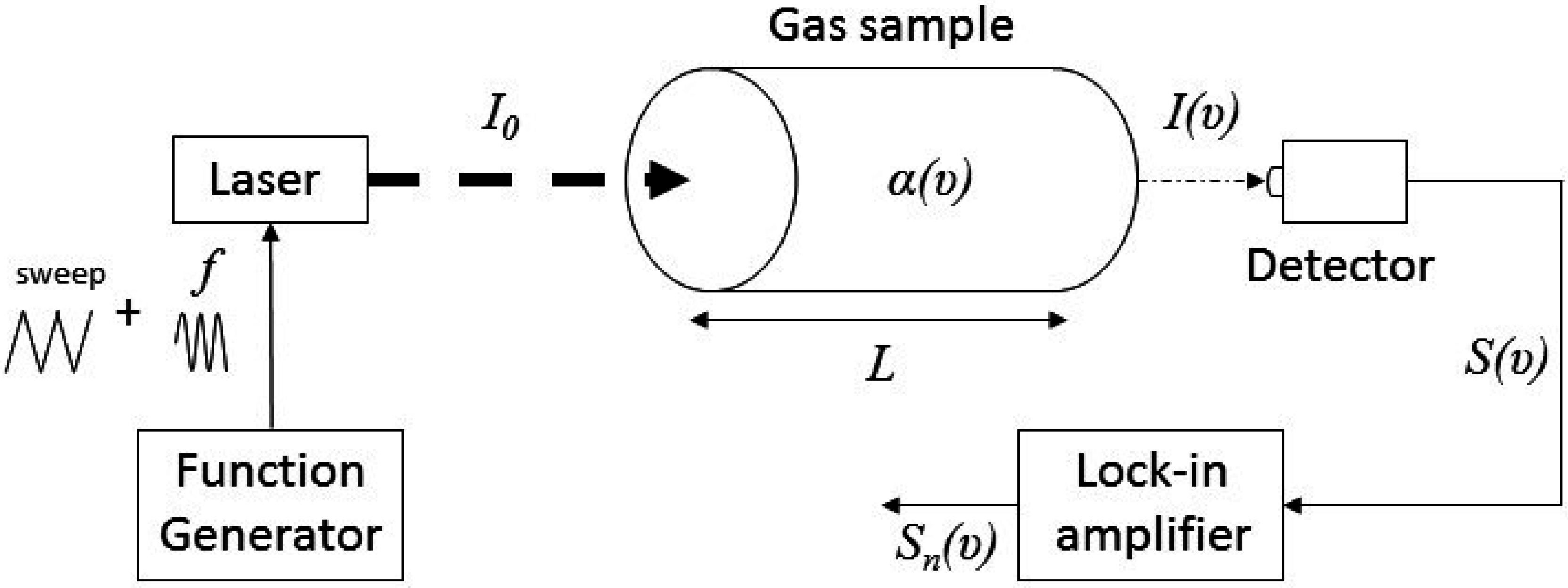
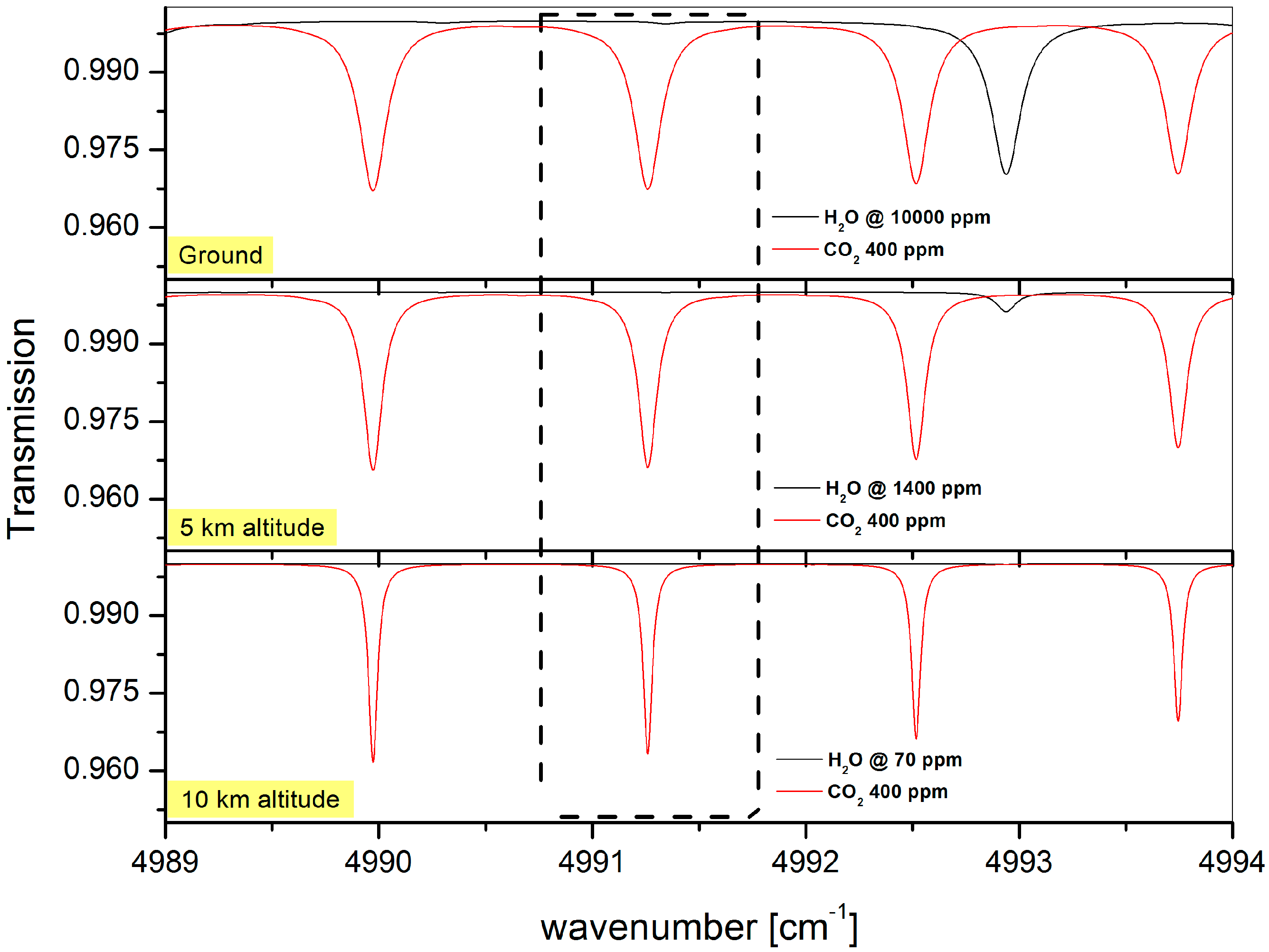
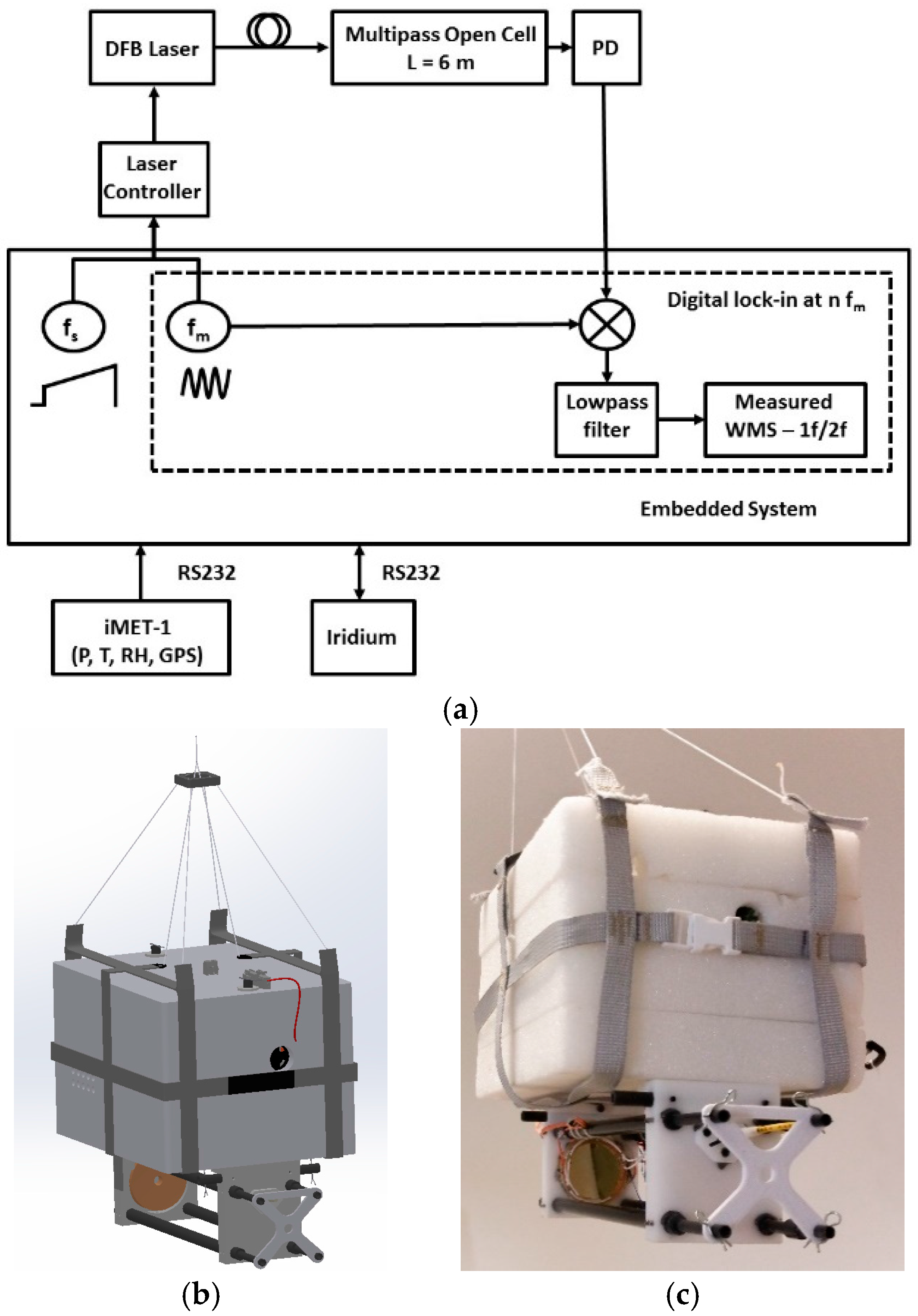
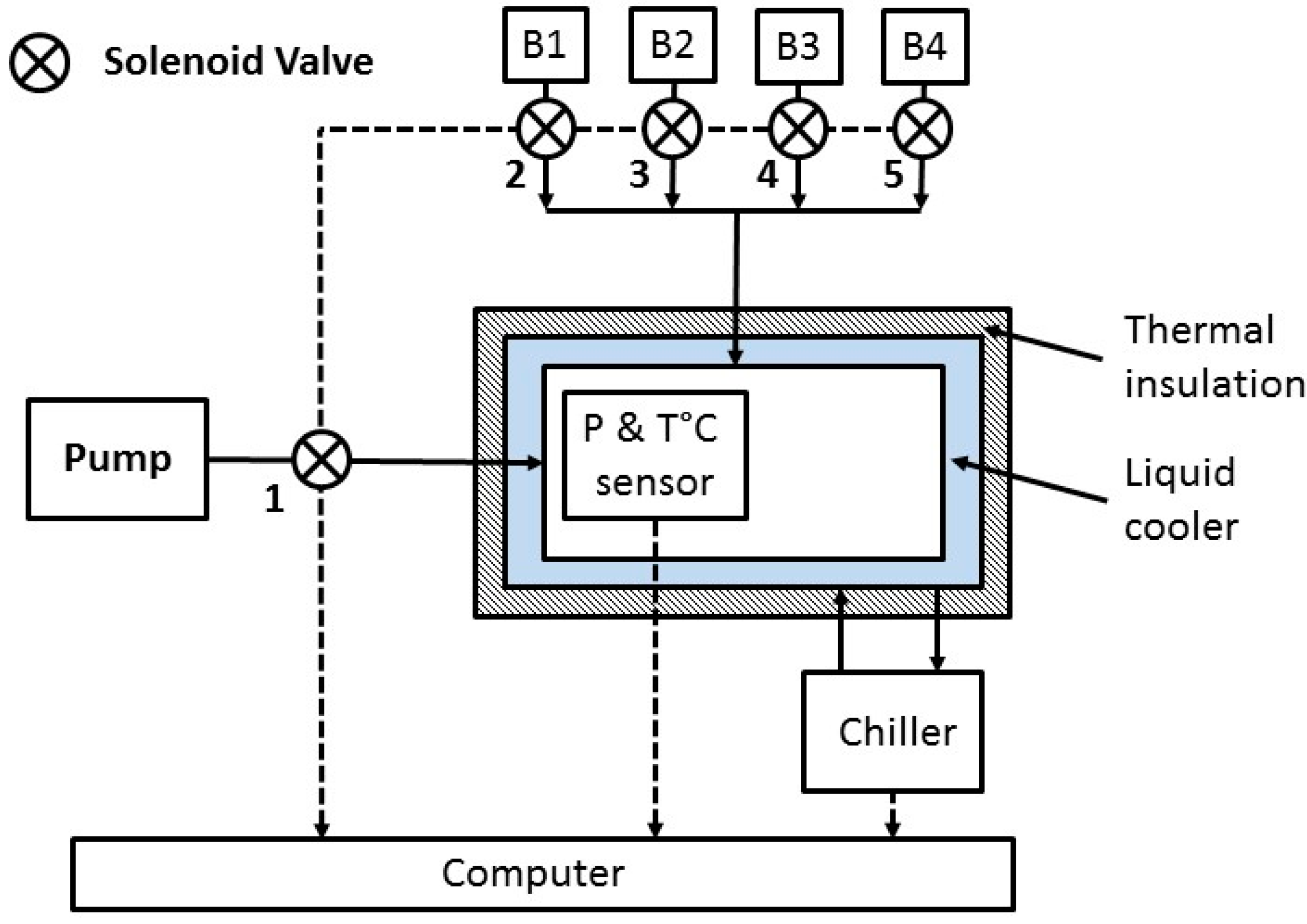
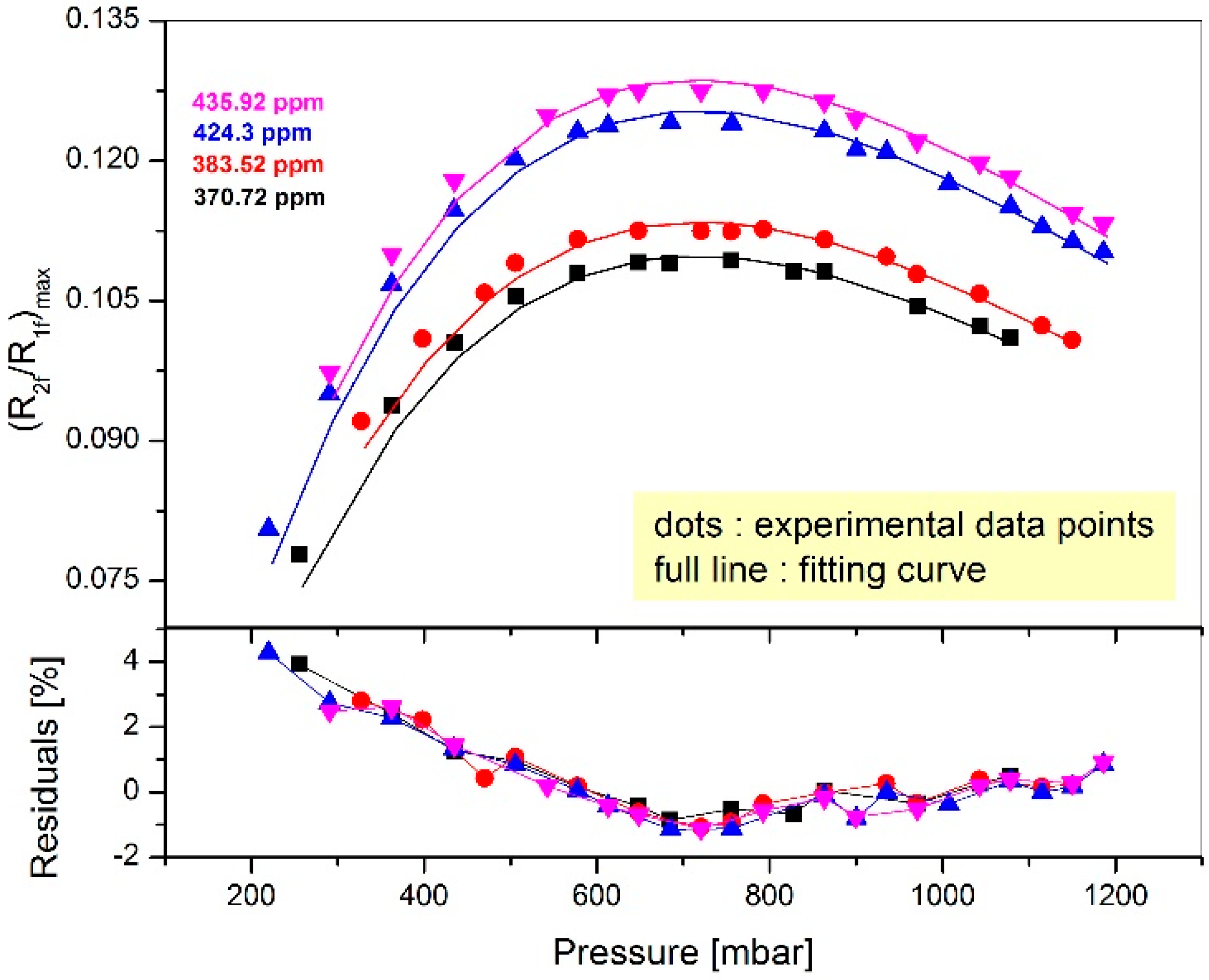
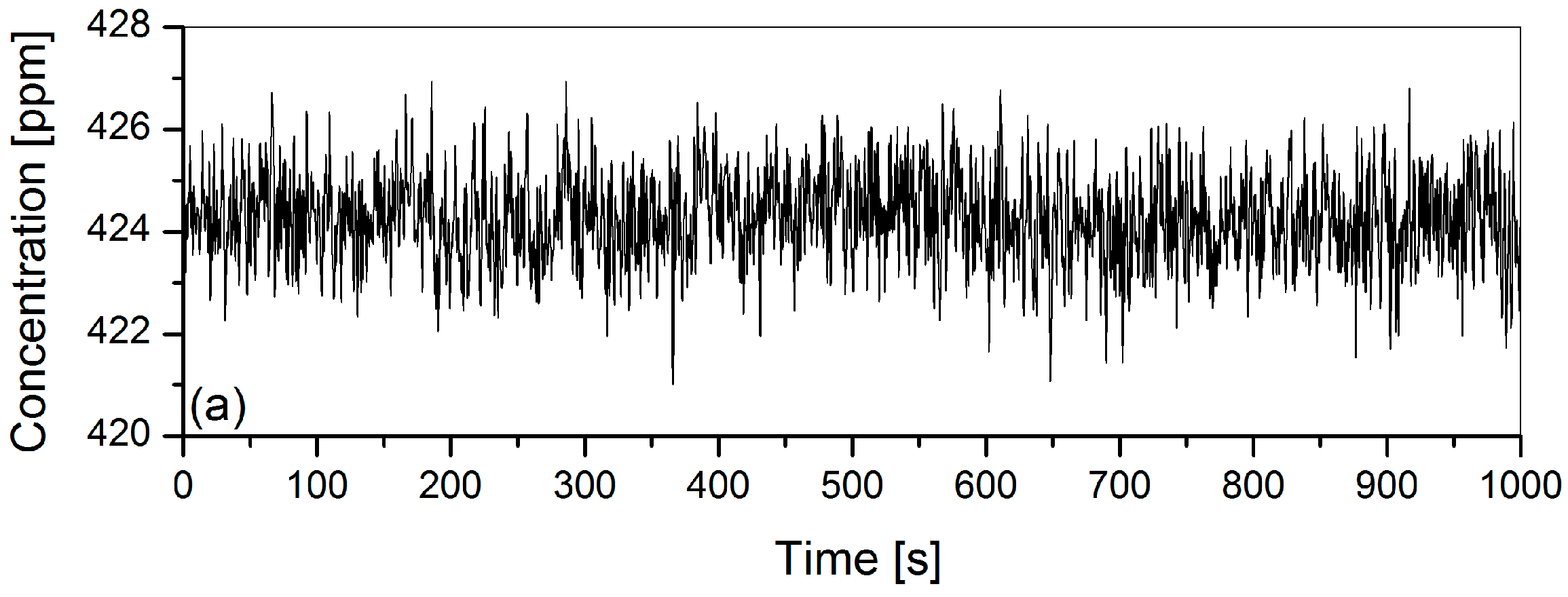
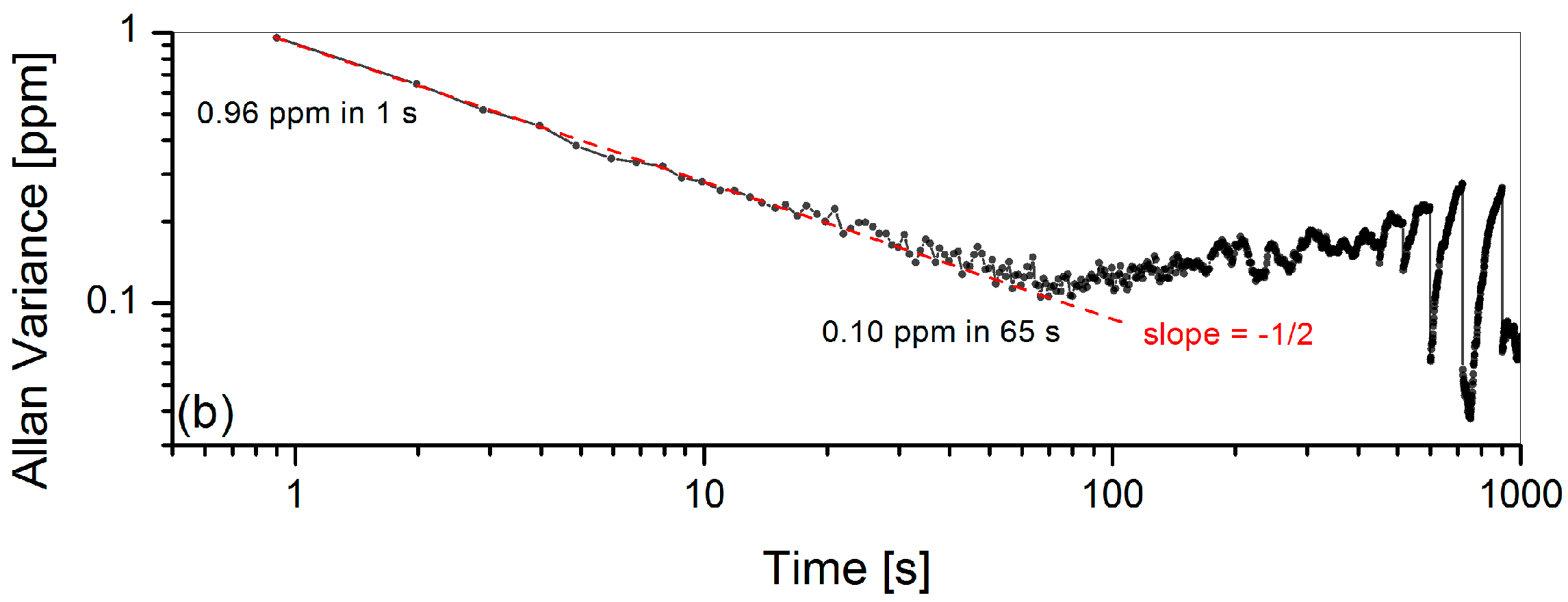
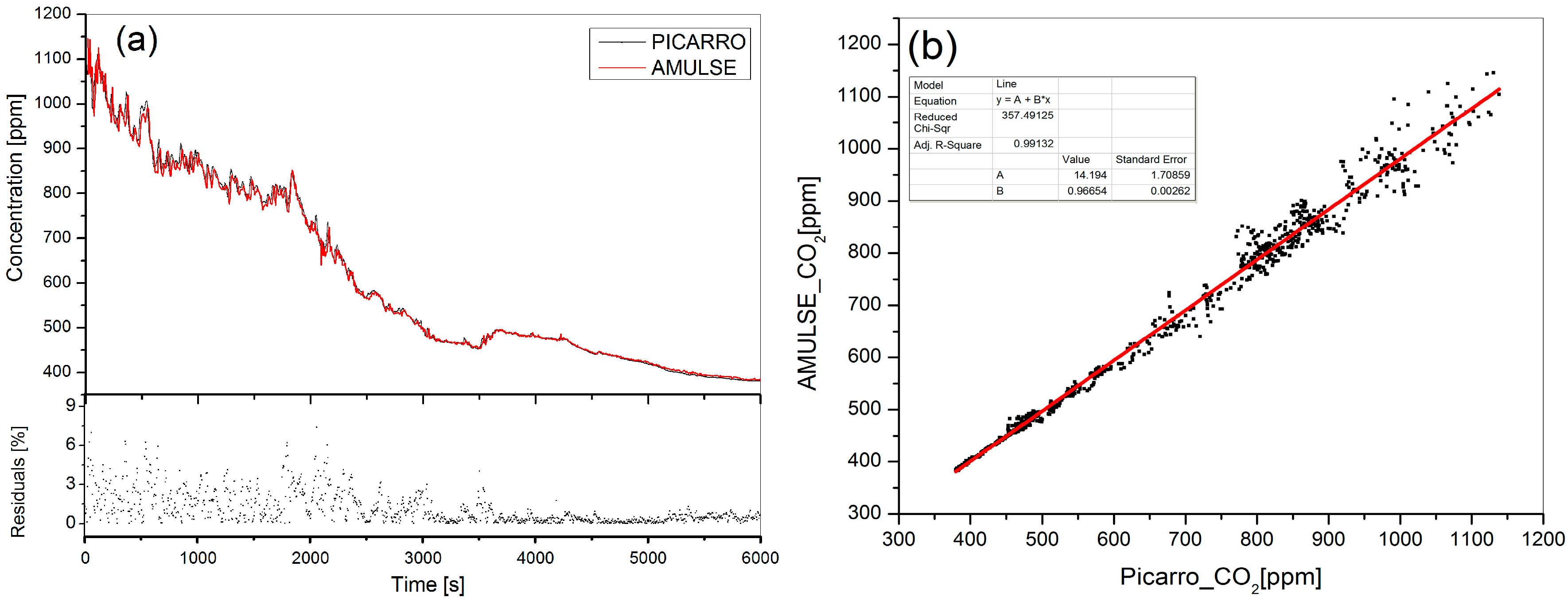


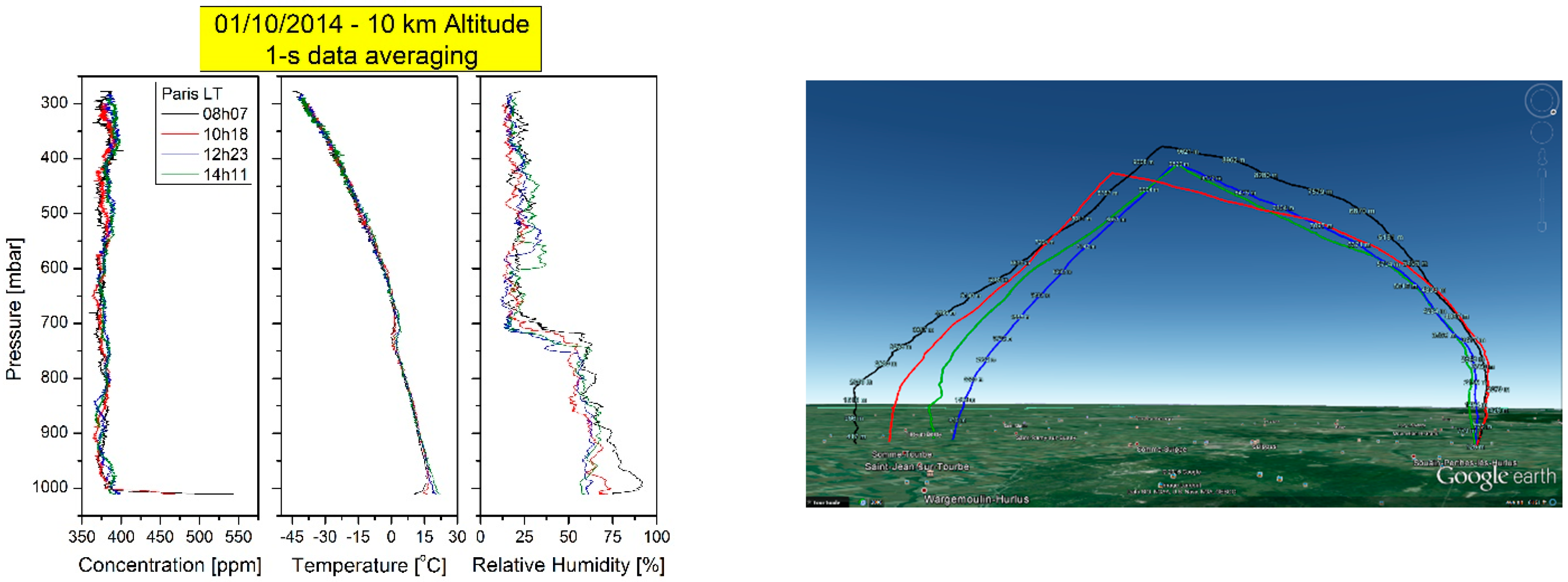

© 2016 by the authors; licensee MDPI, Basel, Switzerland. This article is an open access article distributed under the terms and conditions of the Creative Commons Attribution (CC-BY) license (http://creativecommons.org/licenses/by/4.0/).
Share and Cite
Joly, L.; Maamary, R.; Decarpenterie, T.; Cousin, J.; Dumelié, N.; Chauvin, N.; Legain, D.; Tzanos, D.; Durry, G. Atmospheric Measurements by Ultra-Light SpEctrometer (AMULSE) Dedicated to Vertical Profile in Situ Measurements of Carbon Dioxide (CO2) Under Weather Balloons: Instrumental Development and Field Application. Sensors 2016, 16, 1609. https://doi.org/10.3390/s16101609
Joly L, Maamary R, Decarpenterie T, Cousin J, Dumelié N, Chauvin N, Legain D, Tzanos D, Durry G. Atmospheric Measurements by Ultra-Light SpEctrometer (AMULSE) Dedicated to Vertical Profile in Situ Measurements of Carbon Dioxide (CO2) Under Weather Balloons: Instrumental Development and Field Application. Sensors. 2016; 16(10):1609. https://doi.org/10.3390/s16101609
Chicago/Turabian StyleJoly, Lilian, Rabih Maamary, Thomas Decarpenterie, Julien Cousin, Nicolas Dumelié, Nicolas Chauvin, Dominique Legain, Diane Tzanos, and Georges Durry. 2016. "Atmospheric Measurements by Ultra-Light SpEctrometer (AMULSE) Dedicated to Vertical Profile in Situ Measurements of Carbon Dioxide (CO2) Under Weather Balloons: Instrumental Development and Field Application" Sensors 16, no. 10: 1609. https://doi.org/10.3390/s16101609




